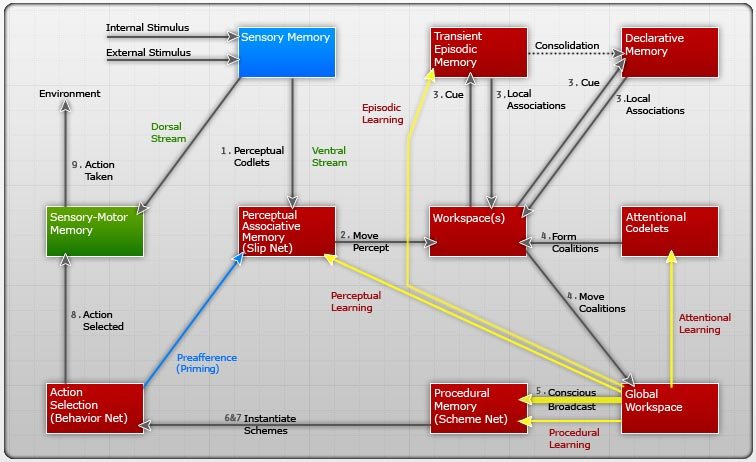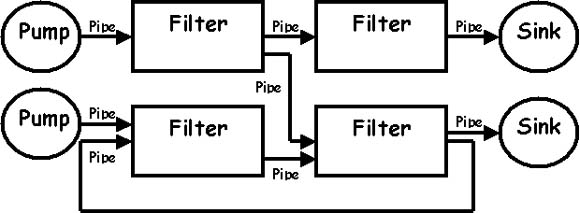Introduction
IDA (Intelligent Distribution Agent) was developed by the “Conscious” Software Research Group (CSRG), now called the Cognitive Computing Research Group (CCRG). The project was funded by the US Navy, hence the project serves a "military" purpose: the software agent facilitates in the process of distributing job assignments to sailors.The essence of this architecture is the implementation of Bernard Baars' Global Workspace Theory. This implementation is what lends the term "conscious" to the architecture. Furthermore, the architecture integrates:
- Pentti Kanerva's Sparse Distributed Memory
- Melanie Mitchell and Douglas Hofstadter's Copycat architecture
- Pattie Maes' Behavor Nets
- John Jackson's Pandemonium Theory
- The Schema Mechanism (Piaget)
"The IDA model of cognition is a fully integrated artificial cognitive system reaching across the full spectrum of cognition, from low-level perception/action to high-level reasoning. Extensively based on empirical data, it accurately reflects the full range of cognitive processes found in natural cognitive systems. As a source of plausible explanations for very many cognitive processes, the IDA model provides an ideal tool to think with about how minds work."
Research Group
The research is done by the Cognitive Computing Research Group of the University of Memphis, which is lead by Stan Franklin. Their current website excels in clarity. They have truly made an effort to transfer their knowledge to anyone interested. I am very impressed by this!Systems built from this architecture
- CMattie (a predecessor of IDA)
- IDA
- LIDA (Learning IDA)
Supported Cognitive Faculties
- Memory (Sensory, Sensory-Motor, Perceptual Associative, Transient Episodic, Declarative, Procedural)
- Workspace(s)
- Attention
- Action Selection
- Consciousness
- Emotion
The architecture: main data-flow, main control-flow
The research group presents this diagram of the IDA's architecture:
IDA's data flow is a Pipe-and-filter architecture. In this architecture, data enters the system through a data "pump", it passes through several filters, and leaves the system through a data "sink". In the case of a human-like mind, the pump is materialized by the senses; the sink is materialized by the actuators, and the filters form cognitive faculties.

IDA's control flow is Emulated Parallel. All filters appear to be active simultaneously, but in fact they are activated in cyclical order, one filter at a time. A filter that processes the input of another filter is activated after that filter. It is well possible that a filter is activated when it has received all of its inputs. A beautiful interactive synopsis of this architecture can be found here.
Matching this cognitive architecture to these software architectures is purely my interpretation. It is mainly based on the latest visualization the team has given of its architecture. Earlier diagrams of the evolving architecture are less in favor of these interpretations.
Links
Major articles
- IDA: A cognitive Agent Architecture, 1998, by Stan Franklin, Arpad Kelemen, and Lee McCauley
Books
- Artificial Minds, 1997, by Stan Franklin
- In the Theater of Consciousness, 1997, by Bernard Baars